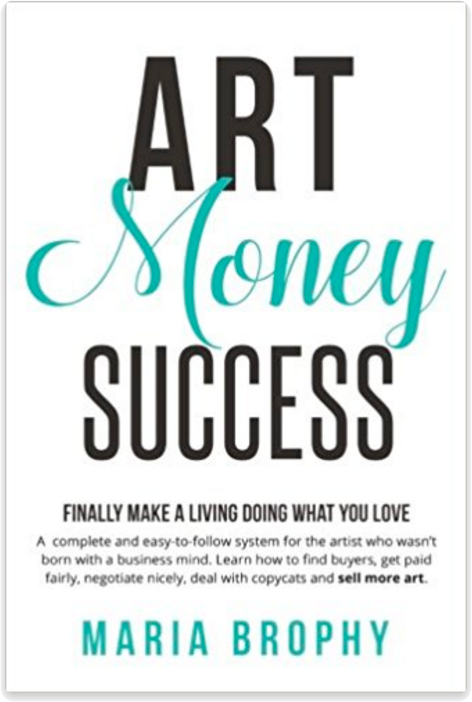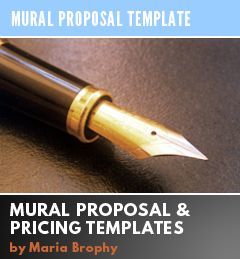 Customers can be like children. They take comfort in knowing what to expect. They want to know that your pricing structure makes sense and is well thought out.
Customers can be like children. They take comfort in knowing what to expect. They want to know that your pricing structure makes sense and is well thought out.
On the other hand, if your price quotes depend on how the wind blows that day, you may be scaring away good clients.
It’s important to keep your pricing consistent when you’re a freelancer. This rule applies to all fields including graphic art, web-design, copy writing, social media consultants and everything in between.
I know, it can difficult to create a structure when there are so many dang variables. Just in art alone, deciding How to Price a Painting can be torture. The cost depends on the medium, complexity of the subject matter, size, and knowledge and reputation of the artist.
In the field of web design, there are over a hundred more variables to consider.
But you have to come up with some semblance of price structure. If your customer is confused, they’ll take their business elsewhere.
The best way to devise a price structure is to begin with pencil and paper. Write out all the possible expenses and time involved in a typical project. Make a crude spreadsheet that helps you see, on paper, what your real profit will be. (Often I do this exercise on an airplane – for some reason I can think best at 30,000 feet in the air.)
If you aren’t sure what to charge, see what other professional people in your field are charging and use that as a benchmark. (Don’t look at what the part-timers are charging – they may not be charging enough and that’ s why they aren’t doing it full-time.)
Keep in mind, you aren’t married to your prices. You can fine tune them as time goes on. And you will. Eventually, you’ll have your pricing so wired that you’ll be able to properly quote a new project quite easily.
Many years ago we hired a graphic designer to create a marketing piece. He charged us a reasonable rate. We were pleased with the work and hired him for more projects. Then, suddenly, his prices jumped about 80%! When we asked why, the answer wasn’t clear.
His price structure had no real structure. It was based on how busy he was that week. This caused us to lose faith in him as a professional. Eventually, we stopped working with him and found someone else that we could count on.
Are you confusing your customers with your pricing? Or do you have a consistent structure, based on either time or a per project basis?
Clients, much like children, feel more secure when there’s structure that they can count on. Keep this in mind the next time your clients ask for a price quote!
Maria xxoo










6 Responses
Maria
I have had numerous discussions on pricing w/assorted artists and art professionals –everyone seems to have their own system/method of pricing.
Recently a professional copy writer quoted $500, because he “liked artists”, when his regular fee was $1,200. Then he wanted to trade for a painting. I considered that, but we could not come to an agreement on shipping the painting he selected. He repeatedly mentioned his “credentials” and wanted me to ship my art before he would even start the work on his end.
I mention this as one of the strangest haggling encounters I’ve had. The fact that someone is wiling to “adjust” their fee so drastically really is more of a put-off than an enticement and does cause confusion as you mention in this article.
This article achieved extclay what I wanted it to achieve.
Good point. I would imagine that people who don’t know their pricing down cold probably do not do much business anyway.
Hey, Maria,
Pricing is a slippery slope and it a tricky question even for seasoned marketers.
Pricing is also one of the four P’s they teach you in B-school–or so I am told. MBA types enter the workplace only with a theoratical understanding of the importance of pricing, but the real learning occurs on the job, when they roll up their sleeves and get their hands dirty. Pricing is a sensitive issue for many customers.
My suggestion, however, is to vary the price according to the needs of the customer. You’ve got to learn how to be adaptable and flexible and not rigid in your orientation toward pricing.
A friend once went to a travel hot-spot but forgot his wallet at home.
The owner said, “stay overnight and you can pay us later. My friend was also offered dinner and breakfast.
No wonder that hotel owner has so many repeat customers. He was also willing to lower the price if your financial situation was not so good and raise the price if he found you could afford it. This flexibility is key but may not work in cases where you have to deal with crowds.
Cheers to your life and keep on smiling.
I was just about to message you on this subject with pricing. For the longest time, I have heard that it is best to price products ending in .95 or .97 cents. Do you feel that is better though to use whole numbers? One designer mentioned that the current trend leans towards .97 cents because it has some psychological effect on the consumer that allows them to think they are getting a deal. Personally I feel if someone would like to purchase a product they will but it, that .03 or .05 cents shouldn’t be a deciding factor. Another designer suggested pricing products ending in five such as 145 or 155 instead of as a whole number like 150. What are your business views on this subject?
Charles, thanks for the question! Sometimes, having a price of $19.95 (or $19.97) sounds better than $20.00. So people will be more likely to buy – that’s why so many retailers set prices that way. When it comes to original art and design, I don’t think it makes much of a difference. For one reason, you’re usually dealing with larger numbers ($2,500 rather than $20), and your clients are more savvy than the average consumer.
You could experiment with the numbers – track if sales fluctuate when you use the $.97 model vs. a full dollar amount.
In the end, I don’t think it will make a huge difference in the art biz either way. Hope that answer helps!